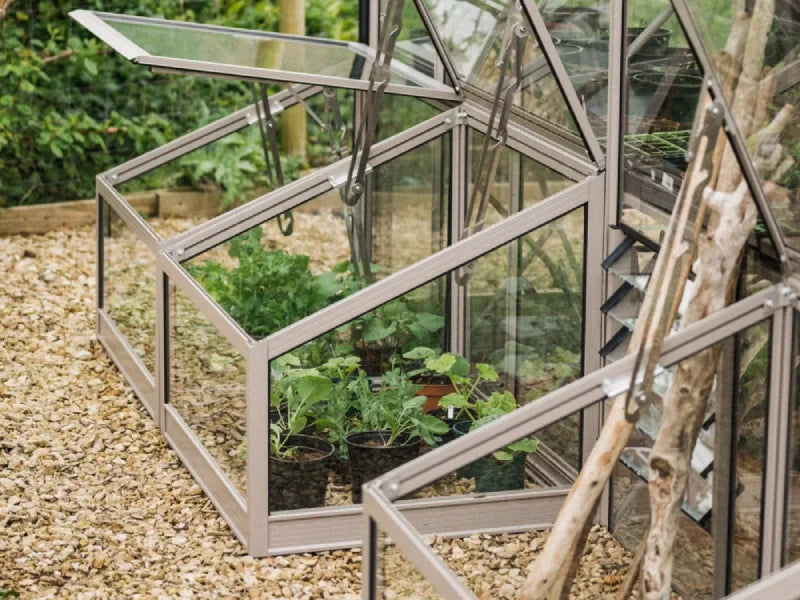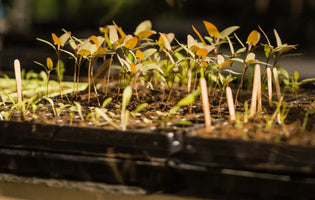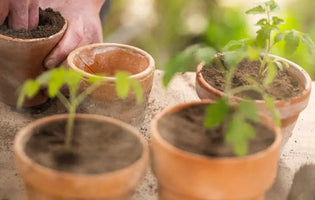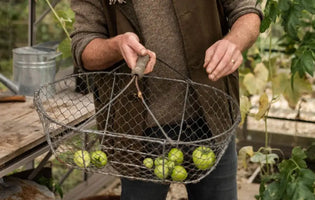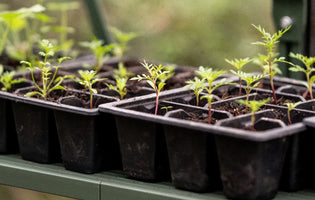Request a Brochure

Did you know that regular maintenance of your garden tools can not only improve their performance in your garden, but extend their lifespan? But how exactly do you maintain your garden tools? Keep reading as we share our ultimate guide for maintaining your garden tools.
Garden tool maintenance
Sharpening your tools
Like the utensils in our kitchen, repeated use of our garden tools can result in them blunt and less effective.
Depending on how often you use your gardening tools can impact on how usually you’ll need to sharpen them, with more frequent use resulting in more frequent sharpening.
As a general rule of thumb, at Rhino Greenhouses Direct we encourage our gardeners to sharpen their handheld garden tools, such as sheers, shovels and trowels, a minimum of 4 times a year. However, we recommend that gardeners regularly check the sharpness of their tools and sharpen them when they become blunt.
How to sharpen garden tools
But how exactly do you sharpen your garden tools? Don’t worry, we’ve created an easy guide on how to sharpen your garden tools, making the process quick and easy for you to follow.
Before you begin to sharpen your garden tools, ensure that your tools are clean and free from debris. If you’re wondering how to properly clean your garden tools, check out our Ultimate Guide to Cleaning and Disinfecting your Garden Tools.
Once your garden tools are clean, you can begin the process of sharpening your garden tools.
What you’ll need:
- Gardening gloves
- A metal file or a tool sharpener
- Clean microfiber cloths
- Linseed oil, multi-purpose oil or WD-40
Step by step guide to sharpening your garden tools:
- Check the sharpness of your garden tools, usually you’ll be able to tell when your garden tools are due for a sharpen as you will find that you are having to put in more effort when using your tools. For instance, with garden sheers you may find that you are having to apply more pressure when cutting. However, if you are unable to tell through the use, or want to know how you can identify blunt edges of your tools, simply examine the edge of your tools. A tool that needs sharpening will often look dull and discoloured.
- For tools such as sheers and secateurs, you will need to identify the cutting edge of your tool, as this is the area in which you will need to sharpen. To identify the cutting edge of your tool, closely examine your tool and look for the bevel. The bevel will be slightly curved, and easy to spot.
- Once you have identified the cutting edge, whilst wearing gardening gloves, take your metal file or sharpening tool and carefully work your file in small strokes across the blunt edge of your tool.
For sheers and secateurs, run your file across the bevel and your cutting edge and work away the blunt edge of your tool.
For tools such as shovels and trowels, slowly work your way around the blunt edge of your tool.
You will notice that the edge of your tool will become shiny, this is because the file is working away the bluntness of your tool and sharpening its edge.
- After filing the edge of your tool, wipe your tools with a clean microfiber cloth to ensure that your tool is clean from any debris that may have appeared through sharpening. Remember that your tools are now sharp, so be careful not to run your hand directly over the sharpened edge.
- Now that your tools are sharpened, use a clean microfiber cloth and linseed oil, multi-purpose oil or WD-40 to oil your tools to slow down rusting on your tools.
Oiling your Garden Tools
As we have mentioned, oiling your garden tools after sharpening is key to slowing down rust formation on your garden tools. However, oiling your tools can also help extend the mechanisms of your tools. For instance, oiling your garden sheers and secateurs can improve the joints and springs in your tools, resulting in easier use within your garden.
At Rhino Greenhouses Direct, we recommend 2 simple items for oiling your tools, many of which can already be found within our homes:
- Linseed oil, multi-purpose oil or WD-40
- Clean microfibre cloths.
How to oil your garden tools:
- Ensure that your garden tools are clean and disinfected prior to oiling. When your tools are clean, the oil will apply easier and add a layer of protection to your tools and slow down the formation of rust.
- Once your tools are clean, take a clean microfibre cloth and the oil of your choice and slowly begin working the oil with the cloth onto your garden tools and ensure to coat the metal in slow circular motions.
- For tools with moving parts, ensure to oil the joints and springs on your tools for smoother uses within your garden.

